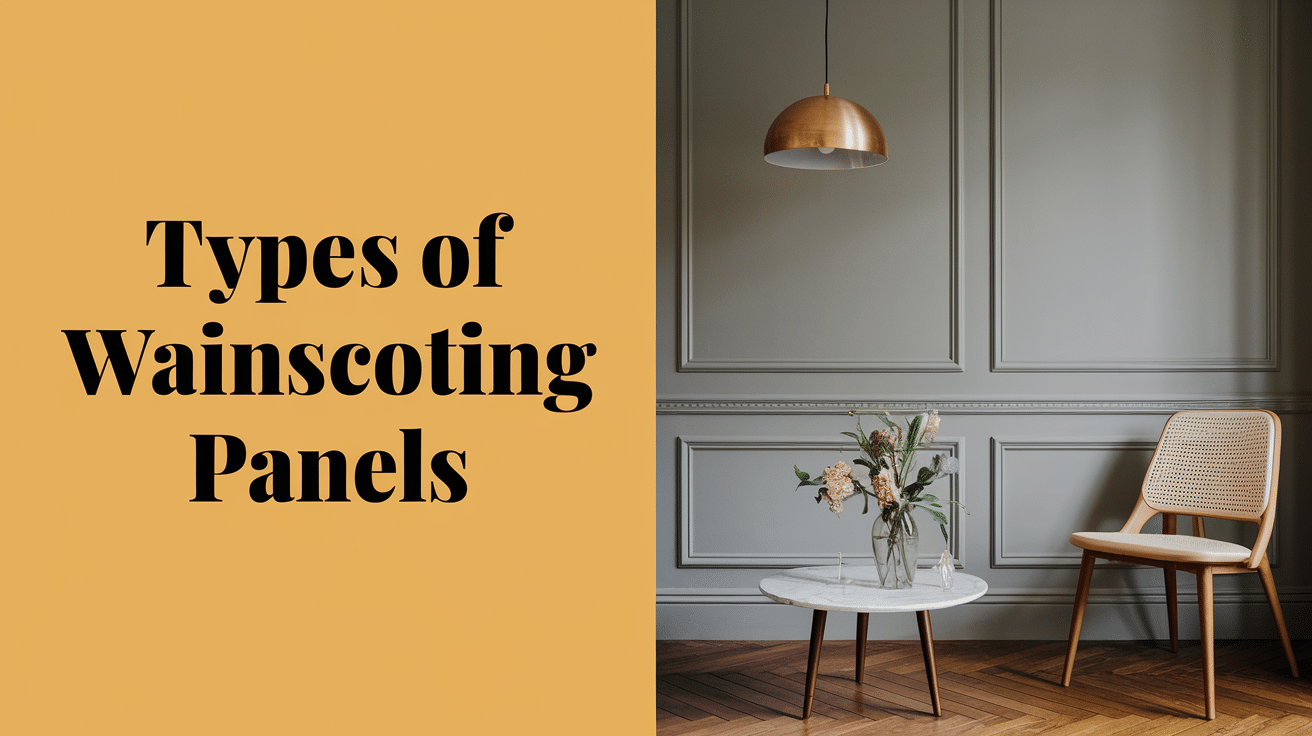Have you ever noticed how adding wooden panels to the lower part of a wall can make a room look much more polished? That’s wainscoting – a simple way to instantly improve the look of your walls.
Many homeowners want their spaces to look great without spending too much or needing special skills. Wainscoting offers a perfect solution!
It not only protects your walls from damage but also makes rooms feel more stylish and complete. This guide will look at the different types of wainscoting, from traditional raised panels to modern options like vinyl.
You’ll learn which styles suit different rooms, the best materials to use, and how high to install them on the walls.
By the end, you’ll know exactly which wainscoting style fits your home and budget, helping you make a smart choice for your space.
What are Wainscoting Panels?
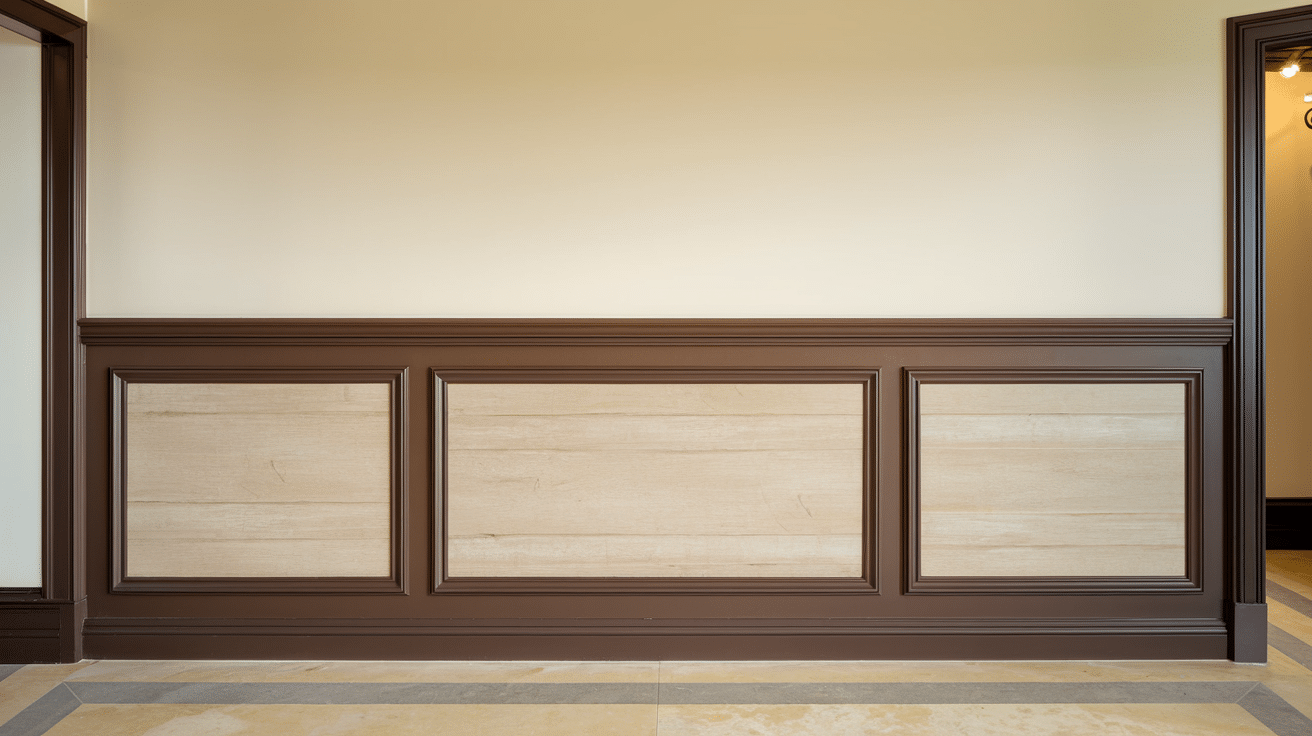
The word “wainscot” comes from old Dutch words that meant “wall boards.” People have been putting this type of paneling in their homes since the 1300s!
They are wooden boards or panels that cover the lower part of walls inside homes. They usually go from the floor up to about 3 or 4 feet high.
People first used wainscoting to help keep homes warm and dry, but now they’re mostly used to make rooms look nice.
These panels can be made from solid wood, plywood, MDF (medium-density fiberboard), PVC, or even vinyl, depending on your budget and needs.
The panels are fitted together and usually topped with a chair rail (a horizontal piece of molding) that marks the upper edge.
Why Do People Use Wainscoting in Their Home?
Wainscoting not only enhances your space but also offers a range of functional and other benefits, Such as:
- Wall protection: Wainscoting helps guard walls against marks, bumps, and scratches
- Hiding damage: It can cover up old wall damage or uneven surfaces
- Adding style: It makes plain rooms look more finished and fancy
- Making rooms cozy: Wood panels can make large rooms feel more snug
- Covering pipes or wires: It’s a nice way to hide things that need to be hidden in your walls
Wainscoting has been used in homes for hundreds of years. Long ago, it helped keep cold air from coming through stone walls.
Today, it’s a way to add charm and character to any room in your house.
What are the Different Types of Wainscoting?
Wainscoting comes in many different styles, each with its own look and feel. Knowing the different types can help you pick the right one for your home.
Here are the 7 main types of wainscoting you might want to consider.
1. Raised Panel Wainscoting
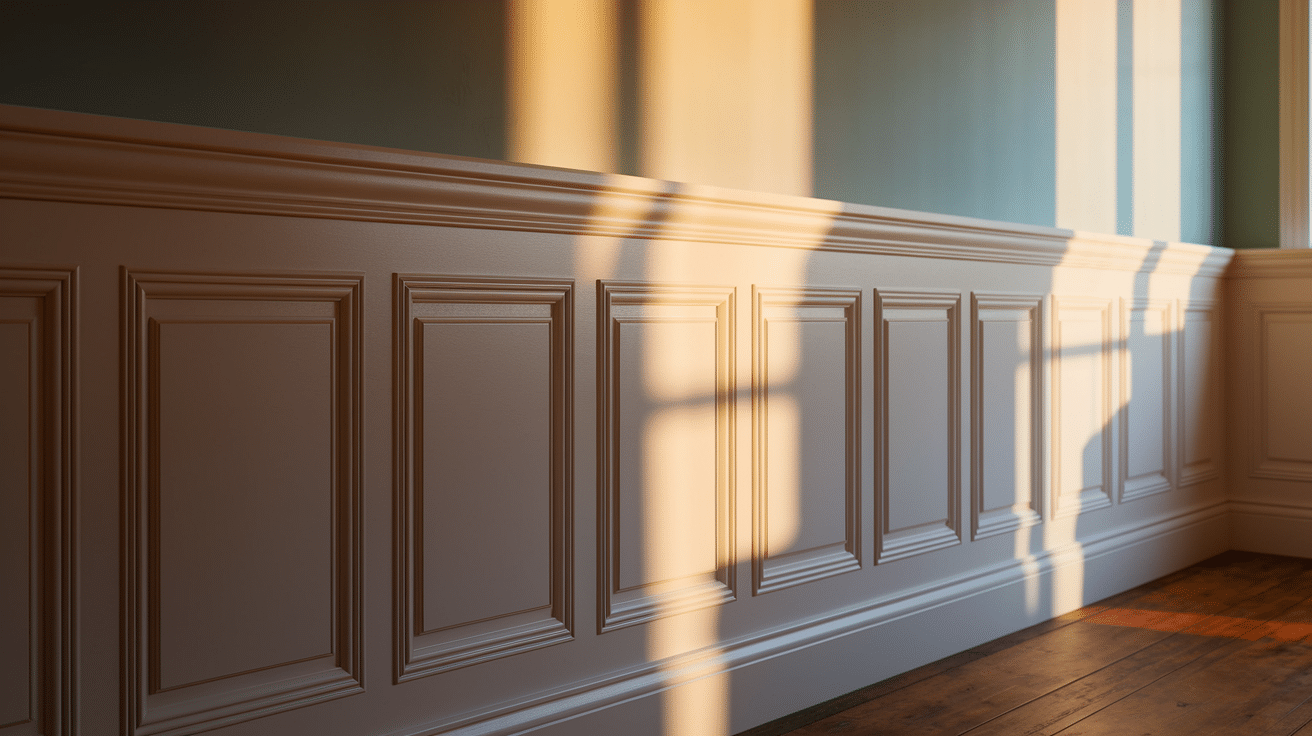
Raised panel wainscoting is what many people picture when they think of classic wainscoting. This style features panels that stick out from the wall with beveled edges that slope back toward the wall.
The panels sit within frames made of stiles (vertical pieces) and rails (horizontal pieces).
This type gives a very formal, traditional look. You’ll often see it in dining rooms, studies, and living rooms in older or more classic-styled homes.
It tends to be one of the more expensive options because it requires more detailed woodwork.
- Average cost for DIY: $5 – $12 per square foot (materials only)
- Average cost for professional installation: $20 – $45 per square foot
- Best suited for: Traditional, formal rooms such as dining rooms, studies, and living rooms in classic-style homes.
2. Flat Panel Wainscoting
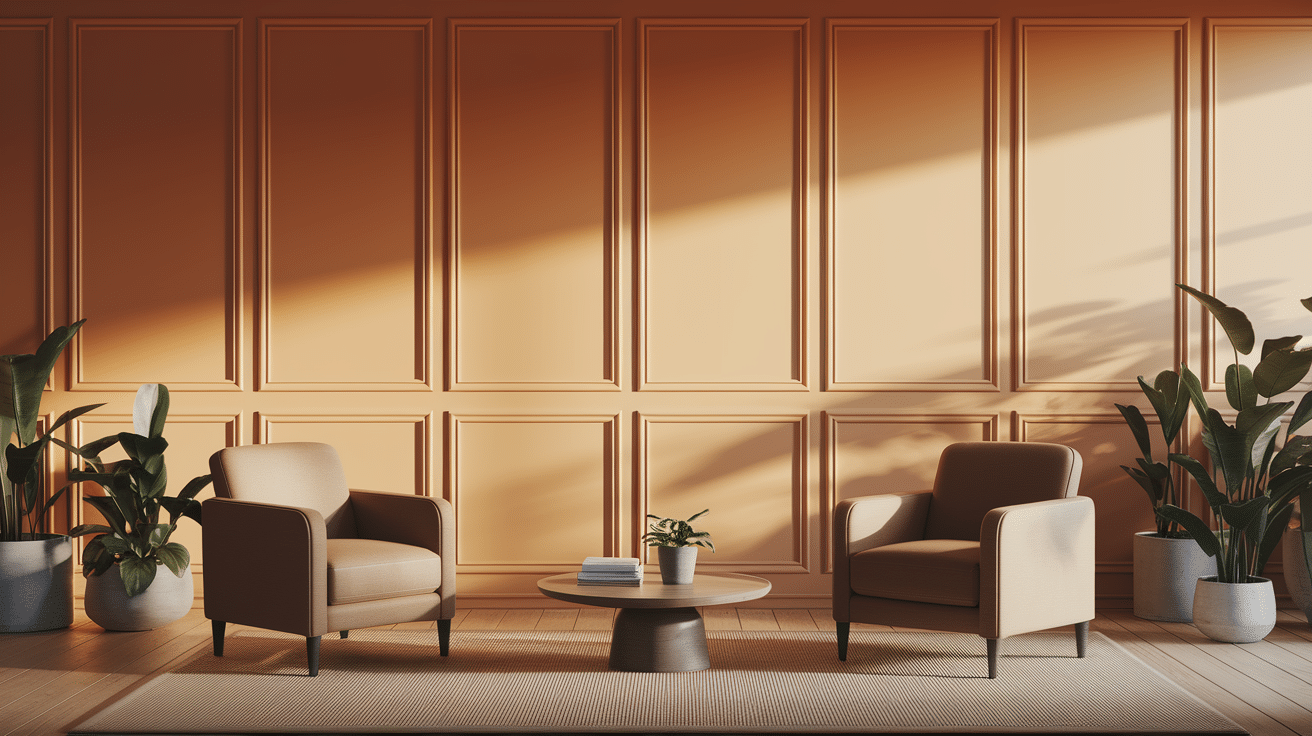
Flat panel wainscoting (sometimes called recessed panel) is the opposite of raised panel. Instead of sticking out, the panels sit back, recessed within the frame.
The panels are smooth and flat, creating a clean look that works well in many different home styles.
This type fits nicely in homes with a mix of traditional and modern design. It’s less fancy than raised panel wainscoting and typically costs less to make and install.
Many homeowners choose this style for bedrooms, living areas, and hallways.
- Average cost for DIY: $3 – $7 per square foot (materials only)
- Average cost for professional installation: $12 – $25 per square foot
- Best suited for: Homes with a mix of traditional and modern styles, often used in bedrooms, living areas, and hallways.
3. Beadboard Wainscoting
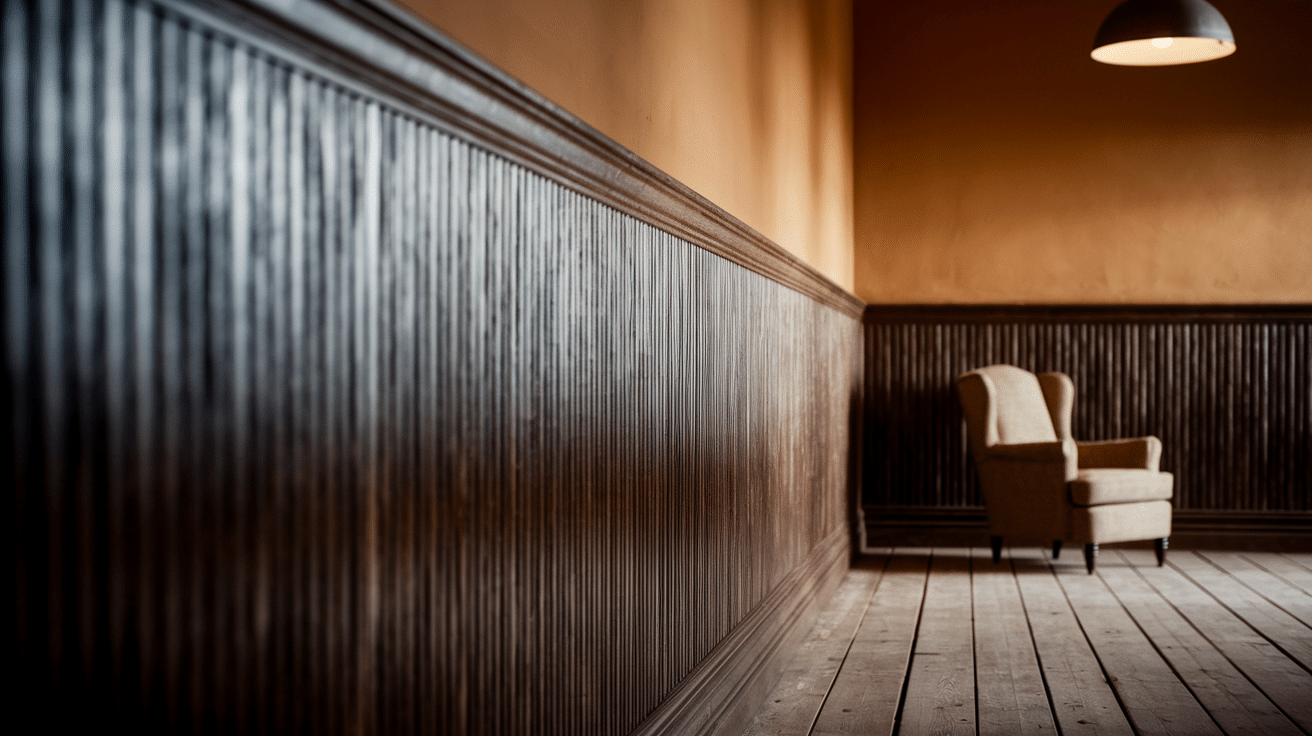
Beadboard consists of narrow wooden boards placed side by side vertically. Each board has a small, rounded groove (the “bead”) where it meets the next board.
This creates a pattern of thin lines running up and down the wall. Beadboard gives a casual, warm feeling to rooms. It works particularly well in cottages, beach houses, and country-style homes.
Many people install beadboard in bathrooms, kitchens, mudrooms, and porches. Today, you can buy beadboard in large sheets rather than individual boards, making it easier to install.
- Average cost for DIY: $4 – $8 per square foot (materials only)
- Average cost for professional installation: $15 – $35 per square foot
- Best suited for: Casual, cozy rooms like cottages, beach houses, bathrooms, kitchens, and mudrooms.
4. Board and Batten Wainscoting
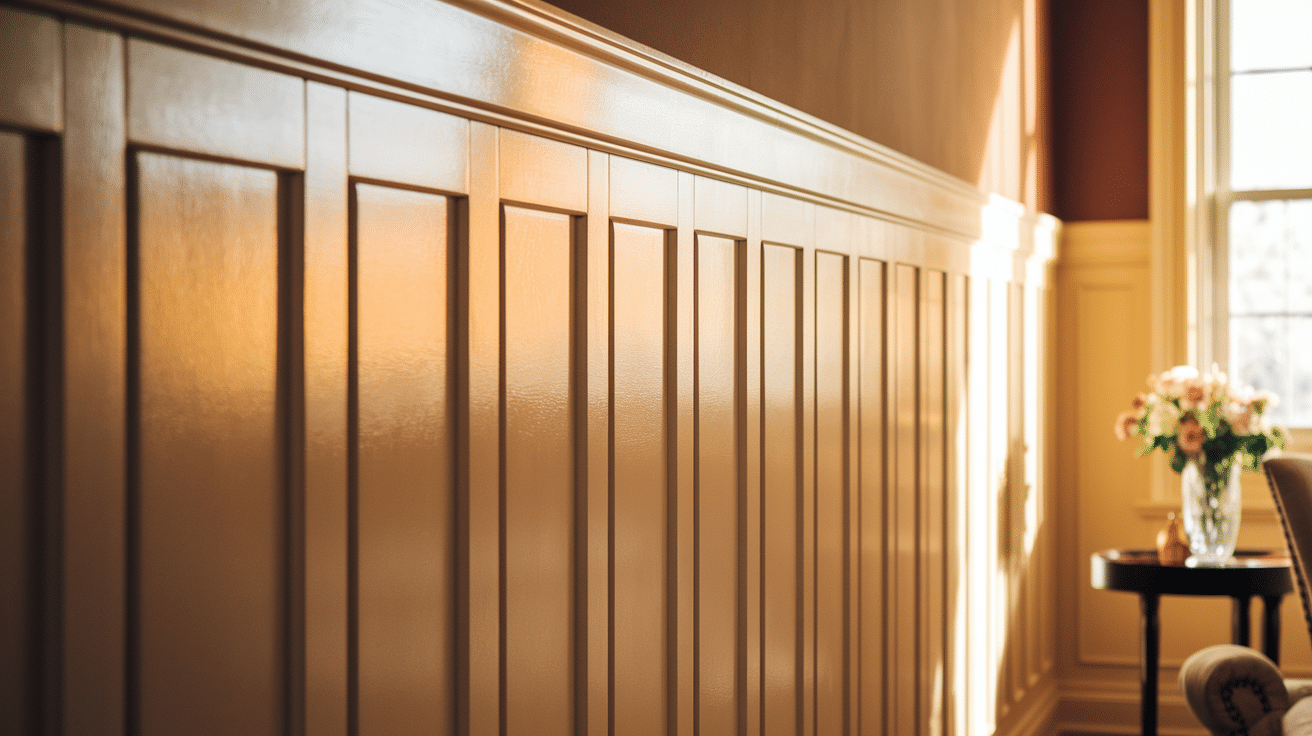
Board and batten uses wide, flat boards as the base layer, with narrow strips of wood (battens) covering the seams where the boards meet.
This creates a pattern of vertical lines that can make a room look taller.
This style has a strong, simple look that fits well in farmhouse-style homes, cabins, and spaces with a more rustic feel. It’s relatively easy to install compared to some other styles, making it popular for DIY projects.
- Average cost for DIY: $5 – $12 per square foot (materials only)
- Average cost for professional installation: $18 – $40 per square foot
- Best suited for: Farmhouse, cabin, and rustic style homes, and works well in DIY projects.
5. Overlay Wainscoting
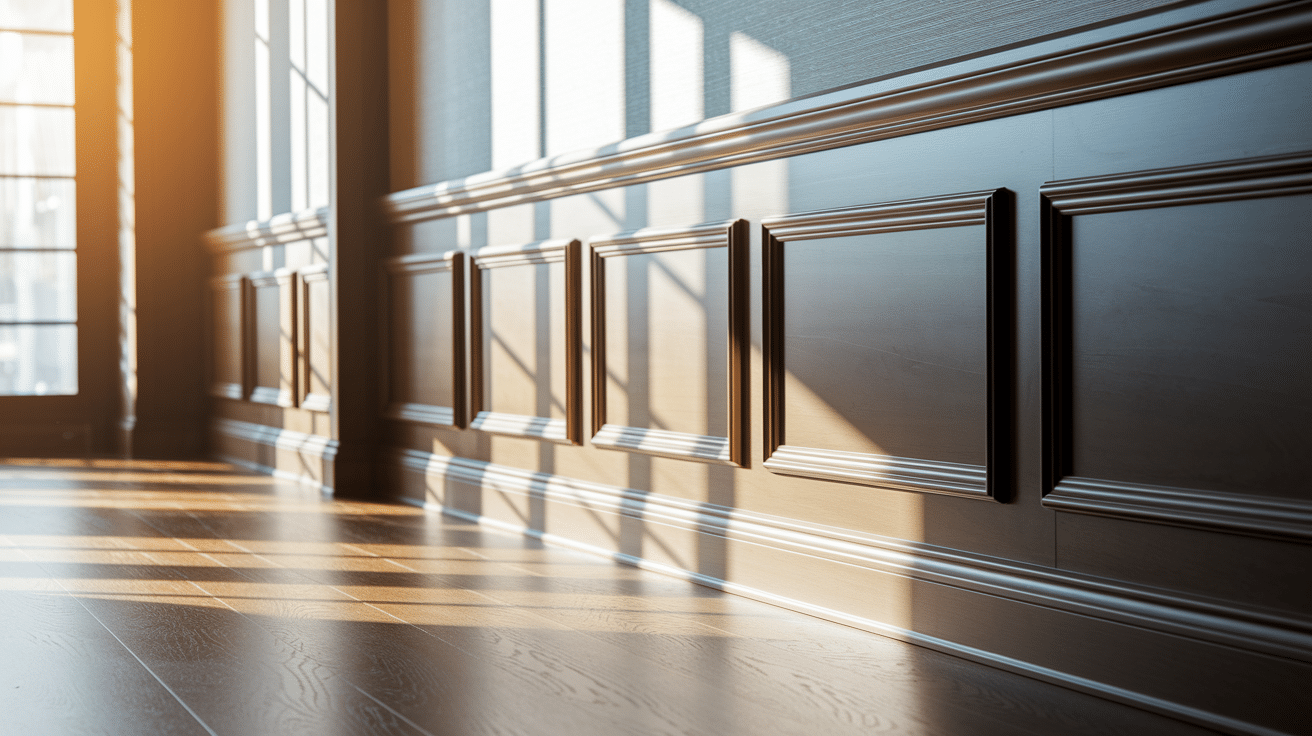
Overlay wainscoting (sometimes called applied molding wainscoting) starts with a flat panel attached to the wall.
Then, decorative molding is attached on top to create geometric patterns—usually squares or rectangles, but sometimes more complex designs.
This style can be as simple or as fancy as you want, depending on the patterns you create. It works well in more modern homes and can be adjusted to match almost any style.
Many people use this type in dining rooms and entryways to make a good first impression.
- Average cost for DIY: $8 – $15 per square foot (materials only)
- Average cost for professional installation: $25 – $50 per square foot
- Best suited for: Modern homes and spaces where you want to make a stylish impression, like dining rooms and entryways.
6. Shiplap Wainscoting
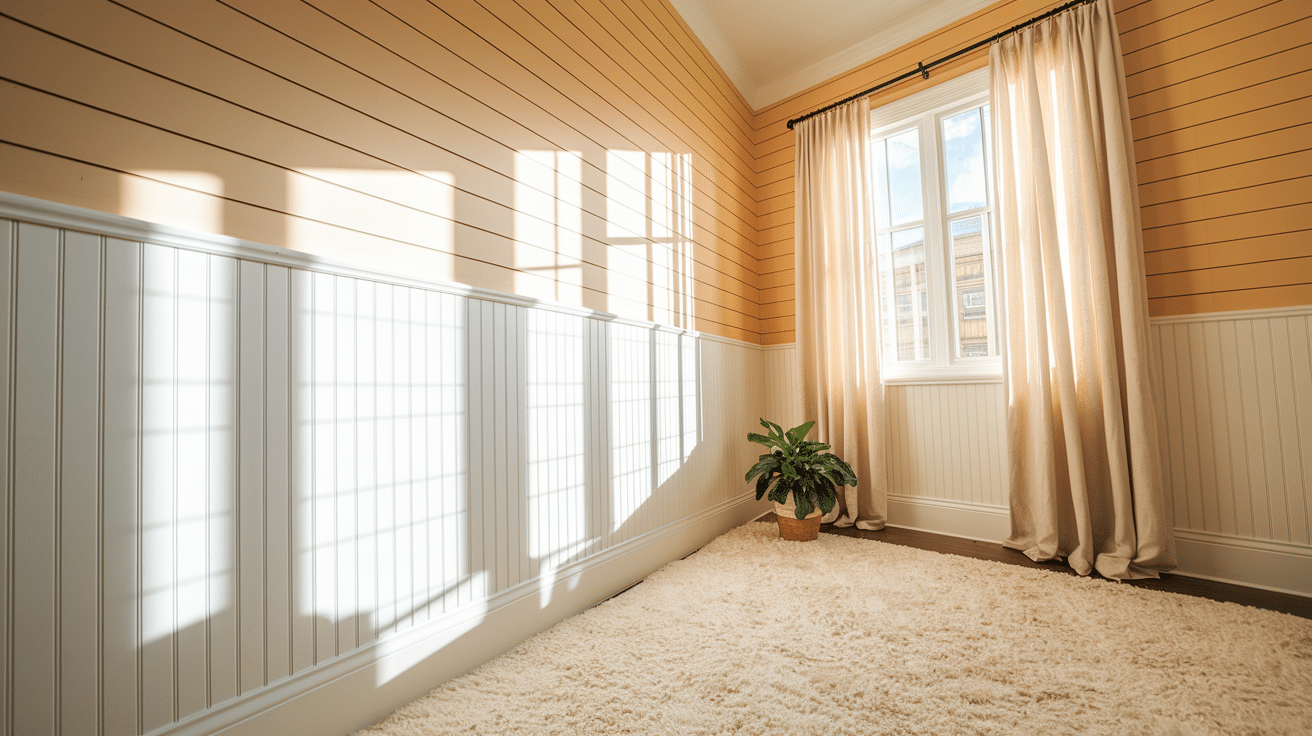
Shiplap features horizontal wooden boards that slightly overlap each other. The boards have notches cut into their tops and bottoms so they fit together snugly, creating small, shadowed gaps between each board.
This style has become very popular in recent years thanks to its use in farmhouse and coastal design. It gives walls texture and interest without being too busy.
Shiplap wainscoting can be painted or left natural, depending on the look you want.
- Average cost for DIY: $5 – $10 per square foot (materials only)
- Average cost for professional installation: $20 – $45 per square foot
- Best suited for: Farmhouse and coastal-style homes, ideal for adding texture to walls without overwhelming the room.
7. Vinyl Wainscoting Panels
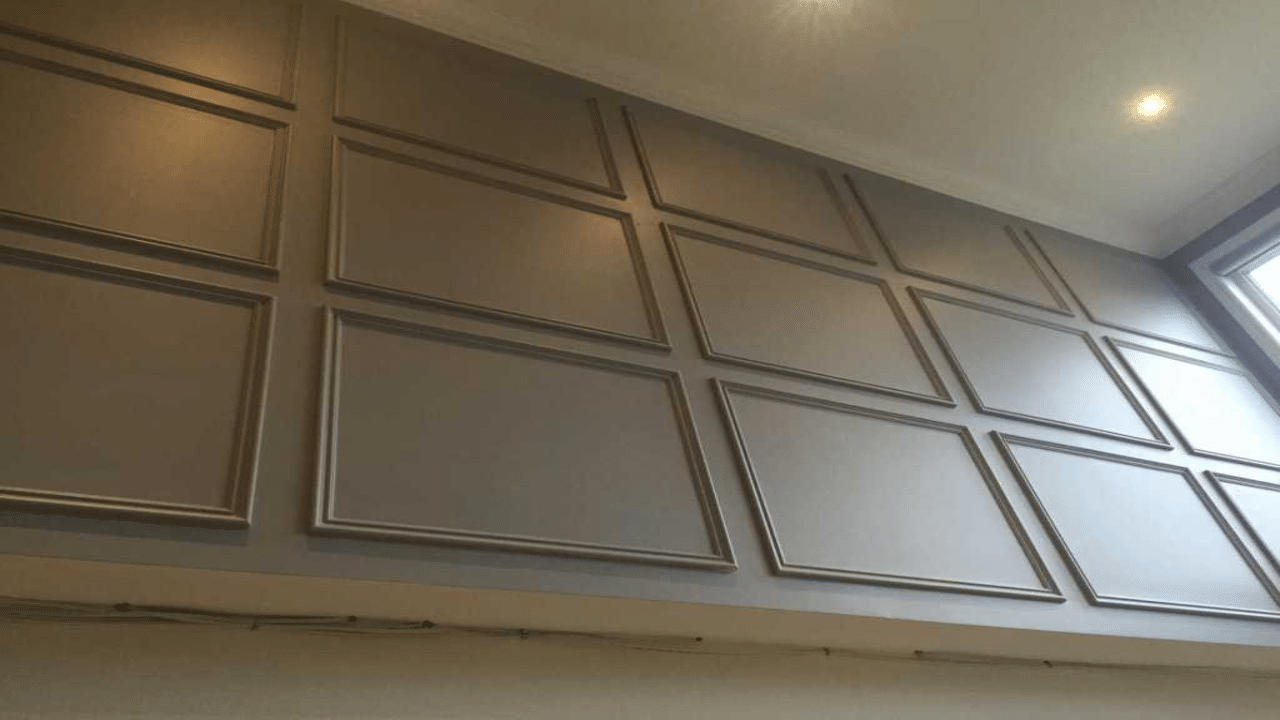
Vinyl wainscoting panels are a more modern and low-maintenance alternative to traditional wood or MDF wainscoting. They are made from durable PVC or vinyl materials, making them resistant to moisture and easy to clean.
Vinyl wainscoting panels are commonly used in bathrooms, kitchens, and basements, where moisture resistance is essential.
These panels can be installed quickly, and unlike wood or MDF, they don’t require regular painting or sealing.
- Average cost for DIY: $5 – $10 per square foot (materials only)
- Average cost for professional installation: $15 – $30 per square foot
- Best suited for: High-moisture areas like bathrooms, kitchens, and basements, as well as low-maintenance and budget-friendly solutions for a variety of home styles.
Best Materials for Wainscoting Your House
When planning your wainscoting project, choosing the right material is an important decision.
Here’s a table of the most common materials with pros and cons of each to help you make the best choice:
| Material | Description | Pros | Cons |
|---|---|---|---|
| Wood | Classic material in various finishes and species | Stylish, customizable, wide range of options, timeless appeal | Can be expensive, requires maintenance (painting, sealing) |
| MDF | Engineered wood mimicking solid wood | Affordable, easy to work with, smooth surface for painting | Can be damaged by moisture, less durable than solid wood |
| Plywood | Layered wood for budget-friendly wainscoting | Cost-effective, sturdy, easy to install | Requires finishing, less durable than solid wood |
| PVC | Plastic material mimicking wood | Moisture-resistant, durable, easy to clean, low maintenance | Can appear less natural, lacks wood’s warmth |
| Wainscoting Panels | Pre-made panels (MDF, PVC, wood veneer) | Easy to install, many style options | Less custom look, limited flexibility |
| Composite Wood | Mix of wood fibers and plastic | Durable, moisture-resistant | More expensive than MDF, less visually appealing than wood |
| Tile | Ceramic or porcelain tiles for bathrooms/kitchens | Water-resistant, easy to clean | Cold surface, labor-intensive installation |
Best Height and Placement For Wainscoting
The height of your wainscoting affects both how your room looks and how well it functions. While there are standard measurements to follow, different rooms may need different heights.
Here’s what you need to know about getting it right.
Standard Heights
Wainscoting is typically installed between 32 to 36 inches high, aligning with the height of chair backs—hence the term “chair rail” for the top molding.
This height divides an 8-foot wall into approximately one-third wainscoting and two-thirds exposed wall above. However, the ideal height can vary based on room dimensions and personal preference.
For instance, in rooms with higher ceilings, extending wainscoting to 36 to 48 inches can complement the increased wall height, creating a more balanced and proportional look.
Ultimately, the chosen height should enhance the room’s aesthetics and suit the homeowner’s design vision.
Room-Specific Heights
Different rooms work best with different heights:
- Dining rooms: Standard 32-36 inches protects walls from chairs
- Bathrooms: Higher at 40-48 inches gives better water protection
- Hallways: Standard height, or slightly lower in narrow spaces
- Living rooms: Standard height, or up to 48 inches with high ceilings
- Staircases: Follow stair angle while keeping consistent height from treads
Bringing It All Together
Wainscoting offers a wonderful way to improve any room in your home. From the formal look of raised panels to the casual feel of beadboard, there’s a style that fits every home and budget.
When picking the right wainscoting, think about the room it will go in, how much care it will need, and what fits your home’s overall style.
Don’t forget to consider both looks and practicality – some types work better in wet areas like bathrooms, while others shine in formal spaces like dining rooms.
With the right tools and planning, wainscoting can be a weekend project for handy homeowners. Those who prefer not to tackle it themselves can find skilled workers to handle the job.
Which type of wainscoating did you find most interesting? Share your thoughts!
Frequently Asked Questions
What is the Golden Rule for Wainscoting?
The golden rule for wainscoting is to install it at the right height, typically around one-third of the wall’s total height, for balanced and aesthetically pleasing results.
What is the Most Durable Material for Wainscoting?
The most durable material for wainscoting is solid wood, particularly hardwoods like oak or maple, offering strength and longevity, or PVC for moisture-resistant areas like bathrooms.
What is Tall Wainscoting Called?
Tall wainscoting is often referred to as “half-wall wainscoting” or “wainscot paneling,” covering half or more of the wall’s height for a bold, dramatic effect.
Should Wainscoting Be Lighter or Darker than the Walls?
Wainscoting is typically lighter than walls to create contrast and emphasize the paneling, although darker wainscoting can be used for a more dramatic, formal look.

